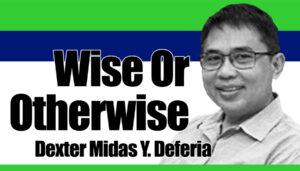PLDT and Smart championed the digital welfare of Filipino senior citizens in 2023, via their Inclusion, Diversity, Equity, Advocacy through Technology (IDEATe) program.
“PLDT and Smart have long been implementing programs for senior citizens nationwide. We remain committed to serving more Filipino elderly and other vulnerable groups through our services and programs that improve their everyday lives through technology,” said Cathy Yang, first vice president and head of Group Corporate Communications at PLDT and Smart, in a press release Jan. 26.
Throughout the SIM Registration period from Dec. 2022 to July 2023, Smart and TNT provided thorough assistance to senior citizen subscribers, recognizing them as among the most vulnerable to text scams and various forms of online fraud.

They boosted their multimedia information drive and worked closely with local government units and national agencies to bring assisted SIM registration desks closer to the public, prioritizing senior citizens, persons with disabilities, and legacy phone users.
These initiatives, positively received by senior customers, underscored PLDT’s broader goal of protecting subscribers from online criminal activities.
Just recently, the company, with French NGO Passerelles Numériques Philippines and the Lapu-Lapu City and Cebu City LGUs, upskilled about 200 seniors through digital literacy training, and taught the participants smartphone and internet usage basics, assisted by youth volunteers.
Discussions on internet safety and the importance of balancing social media use to ensure one’s mental wellness in today’s increasingly digital landscape were also held.
The digital literacy initiative, specifically for senior citizens, was launched in 2017. Dubbed Smart Millenniors, a combination of the words ‘senior’ and ‘millennials’, the program taught seniors about smartphones, mobile data, social media, cybersecurity, mobile photography and harnessing technology in disaster response.
In three years, the program empowered over 400 senior citizens nationwide, equipping them with digital literacy skills, aided by 200 youth volunteers.
This award-winning initiative was eventually expanded to include programs covering other vulnerable sectors, including farmers, fisherfolk, persons with disabilities, and women in challenging situations, among others. ||




